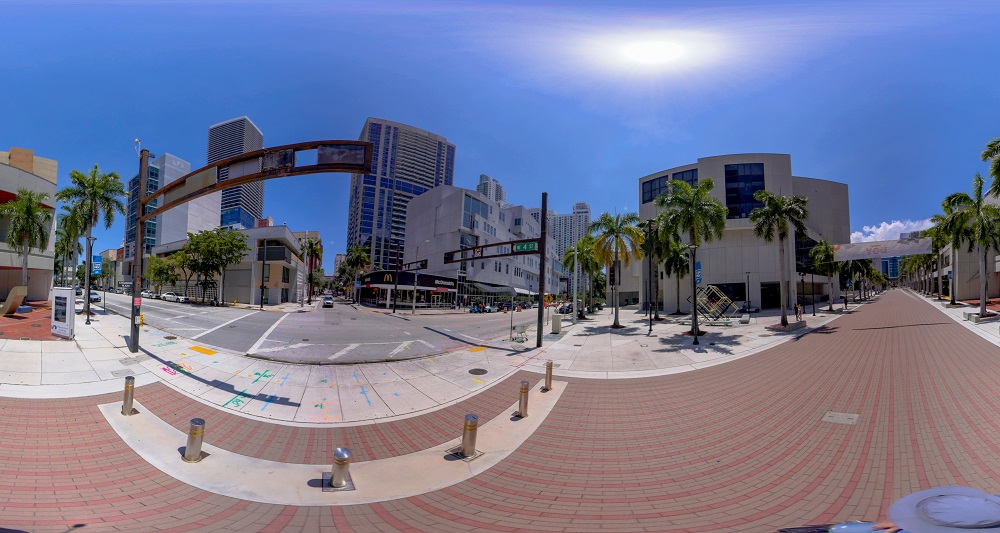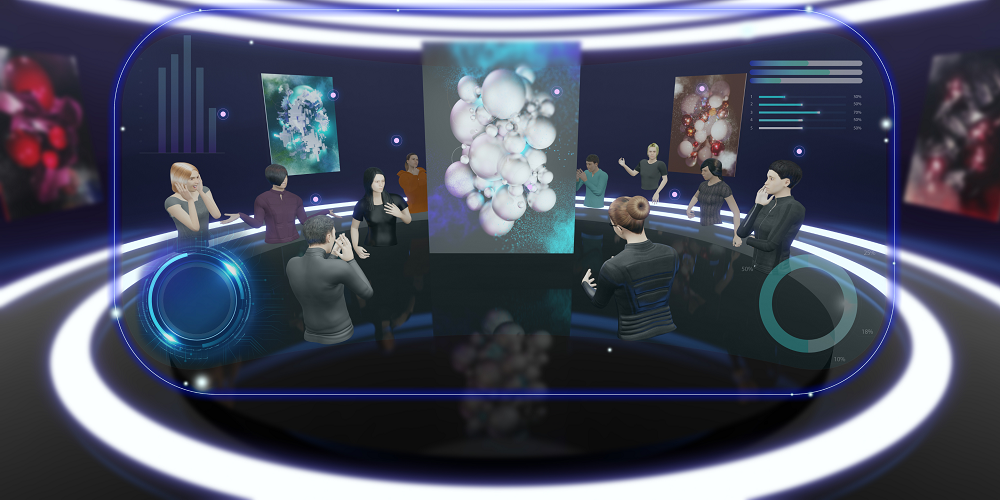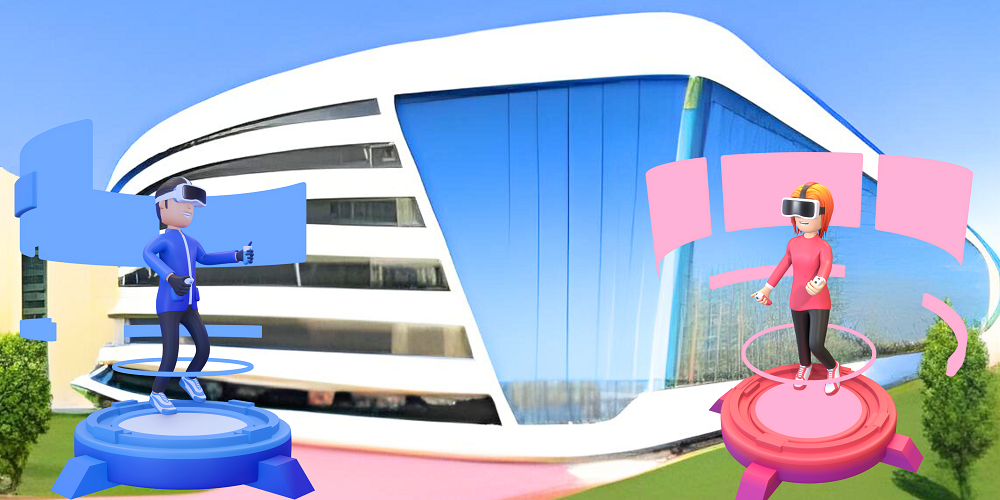Virtual Campus: Everything you need to know about Immersive Learning in Virtual Campus

From the iconic lecture halls of Oxford to the ancient corridors of Nalanda University in India, the journey of education has always been deeply rooted in physical spaces. These places tell stories of our never-ending desire to learn and grow. For ages, this journey was shaped by bricks, beams, and books. However, a new chapter is beginning.
Now, imagine a school without walls, where you can learn from anywhere using special technology like Virtual Reality (VR). This is called a Virtual Campus. Here, you don't need real books or buildings, just a computer or VR headset.
As you delve deeper into this blog, you will discover a fresh approach to education. It's exciting and could change how we all study. So, let’s begin.
Understanding Immersive Learning
Be it about the benefits of VR labs or the advantages offered by virtual campuses, the idea of immersive learning is changing tomorrow’s education significantly.
Immersive learning marks a departure from the traditional classroom setup. It's an approach that seeks to engage students deeply, providing them with an interactive experience that goes beyond the textbook.
At its core, immersive learning is about creating an environment where students are not mere recipients of information but active participants in their education. This philosophy has found its perfect ally in virtual reality (VR) technology.
What is a Virtual Campus?

A virtual campus is a digital world that simulates a physical university environment.
It's an embodiment of immersive learning, where students can engage with their studies through a three-dimensional, interactive experience. Through a variety of tools, including virtual college tours, virtual field trips, and virtual industrial visits, students can explore subjects in a way that textbooks simply cannot replicate.
Virtual Campus Experience
Imagine sitting in a lecture hall while wearing a VR headset.
You look around and see your fellow students, the professor at the front of the room, and the whiteboard covered in equations. You're not watching a video, instead, you're in the room, part of the class. This is the essence of the virtual campus experience.
Features of a Virtual Campus
Here are the features of a Virtual Campus:
✔️ 3D Interactive Environments
Virtual campuses elevate the online learning experience by introducing learners to a three-dimensional environment.
Unlike traditional online platforms that offer flat, two-dimensional interfaces, a 3D virtual campus gives students a sense of spatial presence. This means that learners can navigate through virtual spaces much like they would in a physical campus – from auditoriums to libraries and breakout rooms.
The dynamic nature of these environments enhances students' sense of immersion, making the learning experience more engaging and memorable.
✔️ Avatars and Real-time Interaction
One of the hallmarks of a virtual campus is the use of avatars. These digital personas represent students, educators, and sometimes guest speakers or characters within the learning modules.
The use of avatars fosters a sense of community, as they allow for real-time interactions, conversations, and even non-verbal cues. Such interactions can range from group discussions in a virtual classroom to casual meet-ups in a digital common area. This feature breaks down the barriers of isolation often associated with traditional online learning, fostering a richer sense of community.
✔️ VR and AR Integration
With advancements in Virtual Reality (VR) and Augmented Reality (AR) technologies, virtual campuses have begun integrating these tools to further enhance immersion. VR allows students to step into completely virtual worlds, making abstract concepts tangible or transporting learners to places they can't visit in real life, like historical sites or even outer space.
AR, on the other hand, superimposes digital information in the real world, making it especially useful for practical training modules where students might need to interact with both physical and digital elements simultaneously.
✔️ Simulation-based Learning Experiences
A significant advantage of virtual campuses is their ability to host simulations that closely mimic real-world scenarios.
These simulated experiences can range from performing complex scientific experiments in a virtual lab to navigating ethical dilemmas in a simulated business environment.
By providing a safe space where students can practice, make mistakes, and learn from them without real-world consequences, simulation-based learning boosts confidence and enhances skill acquisition.
Advantages of a Virtual Campus

From being a cost-effective approach to offering Real-World Simulations, the virtual campus has a lot of advantages over the traditional methods of learning. Some of the advantages that make virtual reality a necessity for higher education are given below:
✔️ Accessibility and Inclusion
The rise of the virtual campus era has signaled a shift from traditional brick-and-mortar institutions to more inclusive digital landscapes.
No longer restricted by the confines of geographical locations, students from anywhere around the globe can now access world-class education right from the comfort of their homes. This not only broadens perspectives within a diverse virtual classroom but also ensures that education is not a privilege but a right for all.
Moreover, for students with disabilities, the virtual campus comes as a boon.
Traditional campuses might pose several challenges, from physical infrastructure constraints to the lack of specialized resources. Virtual campuses can be tailored to address specific needs, ensuring that every student, regardless of their physical or cognitive abilities, gets an equal shot at quality education.
With tools like speech-to-text, customizable content display, and personalized assistance, every student is ensured a seat at the virtual table.
✔️ Cost-Effectiveness
The financial logistics of setting up and maintaining a physical campus are staggering. From constructing buildings and laboratories to organizing field trips and workshops, the costs add up.
With a virtual campus, much of the brick-and-mortar expenses evaporate. Institutions can channel funds more efficiently, focusing on refining the quality of education rather than overhead costs. These potential savings can also translate into reduced tuition fees, making education more affordable for students.
✔️ Personalized Learning
The one-size-fits-all approach is gradually becoming obsolete. Every student is unique, with their strengths, weaknesses, and learning styles. Virtual campuses harness the power of technology to offer personalized learning pathways. Students can navigate courses at their preferred pace, delve deeper into topics of interest, and even rewind and revisit lessons for better comprehension.
This autonomy over their educational journey not only boosts confidence but also ensures better understanding and retention.
✔️ Real-World Simulations
Virtual campuses unlock opportunities beyond the standard curriculum. Want to explore the Louvre without booking a ticket to France?
Or, perhaps dive deep into the Great Barrier Reef without getting wet?
Virtual reality tours and augmented reality experiences bring the world to students, offering them unparalleled exposure and hands-on learning. These immersive experiences not only make learning more engaging but also bridge the gap between theoretical knowledge and real-world application.
Embracing the Future of Virtual Campus

The evolution of education is a dynamic process, and virtual campuses represent a giant leap forward. They provide a platform for students to explore, experiment, and engage actively in their learning journey. As technology continues to evolve, the potential of virtual campuses will only expand, shaping a future where education transcends physical boundaries.
Here are the predictions for how virtual campuses might evolve in the virtual reality world:
- Holodeck-style Classrooms: Borrowing from science fiction, future virtual campuses might resemble something like a 'holodeck,' where students can fully immerse themselves in any scenario or environment, making subjects like history or science come alive as they "experience" events or concepts firsthand.
- Biometric Feedback: As wearable technologies improve, virtual campuses may integrate biometrics to understand students' engagement levels, stress, and comprehension, adjusting lessons in real time based on the learners' state.
- Decentralized Learning Platforms: With the rise of blockchain technologies, we might see decentralized virtual campuses where curriculum, credentials, and courses are crowdsourced, verified, and stored on a blockchain.
Integration with AI and other emerging technologies may result into:
- Personalized AI Tutors: Every student could have a personalized AI tutor, who adapts content to the learner’s pace, answers questions in real time, and provides instant feedback.
- Quantum Computing: As quantum computing becomes more prevalent, it will allow simulations in subjects like physics, chemistry, or biology to be more complex and accurate, providing students with a deeper understanding.
- Neural Interfaces: Direct brain-machine interfaces may make the line between thinking and learning almost indistinguishable. Students might "download" knowledge or practice skills in a simulated mental space.
There might be an expansion beyond traditional education into corporate training, workshops, and other sectors:
- Corporate Training: Virtual reality scenarios can help employees practice rare but critical situations, like emergency responses or complex technical tasks.
- Medical and Therapeutic Use: Virtual campuses can be used for therapy or medical training, where real-world practice can be risky.
- Art and Design: Immersive platforms could revolutionize fields like architecture or design, where students can create and walk through structures or models in real time.
Conclusion
In conclusion, the rise of immersive learning through virtual campuses is transforming higher education. The ideation of stepping into a virtual world to learn is no longer a distant dream but a tangible reality. As virtual reality technology continues to advance, it holds the promise of a more inclusive, engaging, and effective educational experience.
It's time that we should embrace this effective approach.

.png)
.png)


.png)